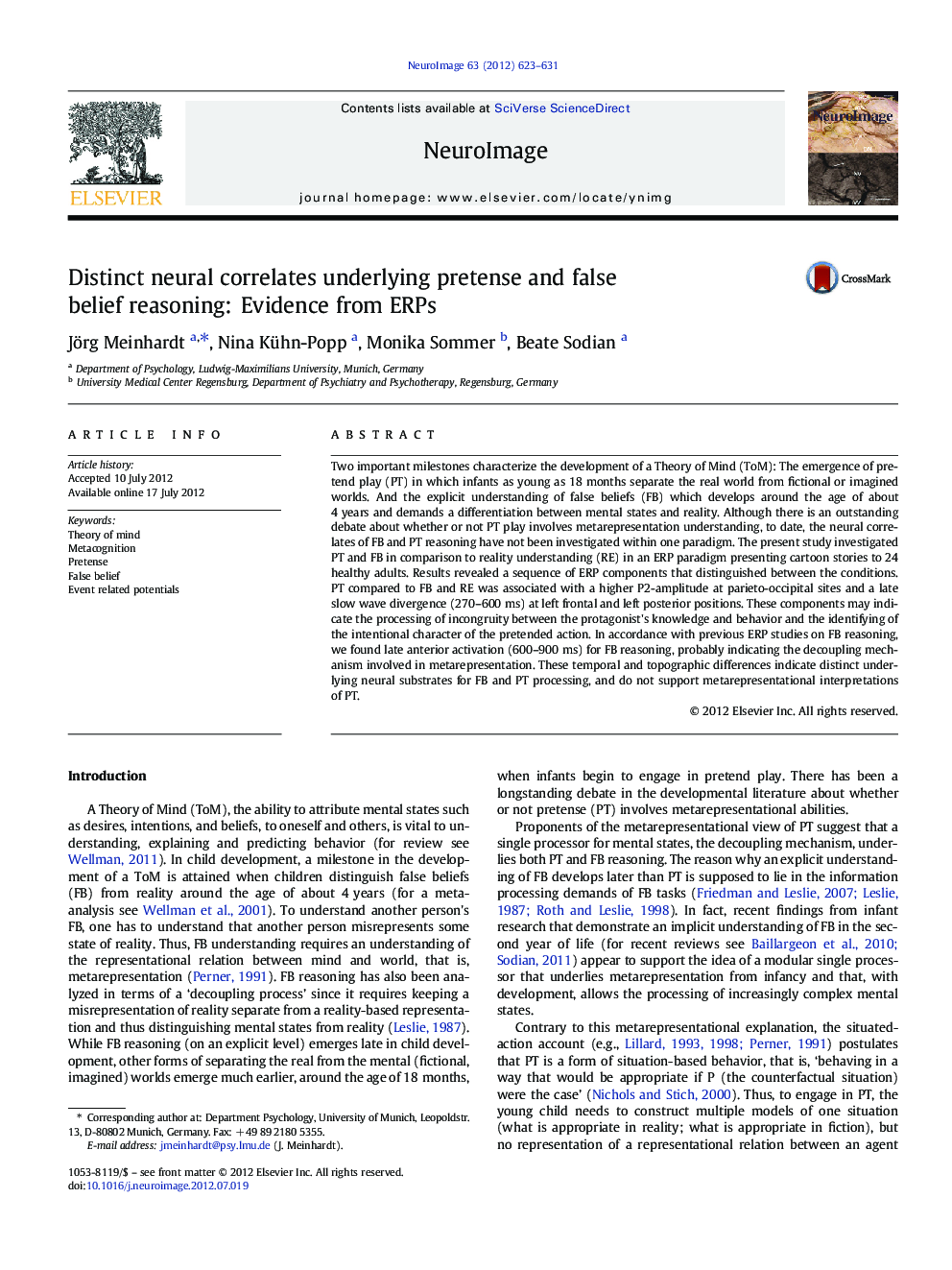| کد مقاله | کد نشریه | سال انتشار | مقاله انگلیسی | نسخه تمام متن |
|---|---|---|---|---|
| 6031468 | 1188732 | 2012 | 9 صفحه PDF | دانلود رایگان |

Two important milestones characterize the development of a Theory of Mind (ToM): The emergence of pretend play (PT) in which infants as young as 18Â months separate the real world from fictional or imagined worlds. And the explicit understanding of false beliefs (FB) which develops around the age of about 4Â years and demands a differentiation between mental states and reality. Although there is an outstanding debate about whether or not PT play involves metarepresentation understanding, to date, the neural correlates of FB and PT reasoning have not been investigated within one paradigm. The present study investigated PT and FB in comparison to reality understanding (RE) in an ERP paradigm presenting cartoon stories to 24 healthy adults. Results revealed a sequence of ERP components that distinguished between the conditions. PT compared to FB and RE was associated with a higher P2-amplitude at parieto-occipital sites and a late slow wave divergence (270-600Â ms) at left frontal and left posterior positions. These components may indicate the processing of incongruity between the protagonist's knowledge and behavior and the identifying of the intentional character of the pretended action. In accordance with previous ERP studies on FB reasoning, we found late anterior activation (600-900Â ms) for FB reasoning, probably indicating the decoupling mechanism involved in metarepresentation. These temporal and topographic differences indicate distinct underlying neural substrates for FB and PT processing, and do not support metarepresentational interpretations of PT.
⺠A sequence of ERPs distinguishes pretense (PT) and false belief (FB) from reality. ⺠PT is associated with a P2 and a slow wave (SW) at left frontal and posterior sites. ⺠In contrast FB is associated with a late slow wave at midline frontal positions. ⺠ERPs for PT indicate the identification of the intentional character of pretense. ⺠The late anterior SW indicates metarepresentational demands of FB in contrast to PT.
Journal: NeuroImage - Volume 63, Issue 2, 1 November 2012, Pages 623-631